Rabbits are tender animals that are susceptible to various diseases. Their breeding is not easy, as it may seem to beginner breeders, because often these pets are exposed to such a dangerous disease as coccidiosis. In order to protect their offspring from death, it is important to know how the disease manifests itself.
Knowing the symptoms is already possible at the first stage to carry out appropriate treatment. So what is coccidiosis in rabbits? How to deal with it? Let's take a closer look at the symptoms and principles of treatment of coccidiosis in rabbits.
Table of contents
Coccidiosis in rabbits
Coccidiosis is a disease caused by unicellular parasites with coccidia. They have a damaging effect on the liver and intestines of the animal. The most susceptible to this disease are young rabbits aged 3-4 months. Still, adults are not immune from this dangerous infection.
Experts say that parasites of this disease exist in the body of the rabbit from the first days of its birth, just like a person is born already with worms and other helminths. The presence of coccidia in the body of the animal does not pose a particular danger, the main thing is not to allow or create conditions for their active reproduction, development and the appearance of the disease coccidiosis.
The affected organ with coccidia can no longer function normally. As a result, part of the food consumed can not be digested, all the useful components will not be absorbed in the body.For this reason, the sick rabbit begins to lose weight, the body is depleted, and eventually it dies.
Sources and factors of infection
Many coccidia cysts are found in the feces of infected animals. Sometimes pathogens pass through feces to the surrounding objects, food, which can eventually lead to infections of other healthy individuals. Therefore, the main source of infection of coccidiosis is considered to be contact and fecal-oral.
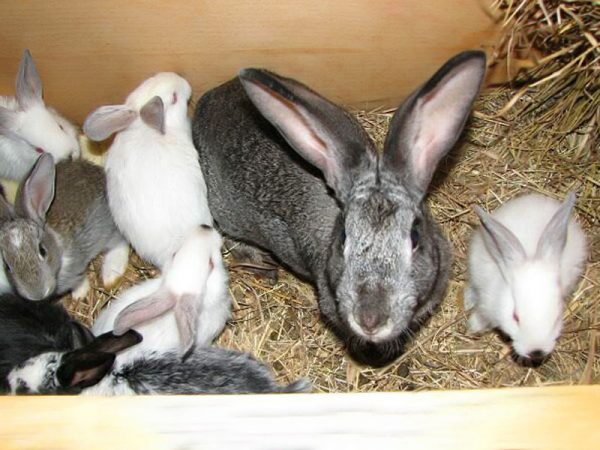
Sources of coccidiosis infection include:
- Through feed mixtures, water, as well as through milk, in which there are ripe coccidia;
- Infection through the feces of infected individuals;
- From other animals that carry the virus of the disease;
- Milk lactating rabbit, which is infected with the disease;
- Various rodents, birds, insects;
- Tools, the form of farm workers.
Often, animals become infected with the disease on those farms where workers carelessly treat their maintenance and do not comply with the relevant sanitary standards. Sometimes animals living in uncleaned cages eat feces, which contain coccidia and subsequently become infected.
You may also be interested in the following articles on the topic of rabbits:
Factors that contribute to the development of the disease:
- The content of rabbits in one cage in a crowded state;
- Non-compliance with quarantine regulations during the acquisition of new individuals;
- If the cells are located in the wrong position, which allows for the entry of rodents or birds carrying the infectious agents into them;
- Non-compliance with sanitary and veterinary rules on the content of these animals.
The disease does not spread by airborne droplets, it is epidemic in nature. Its distribution is explained by the fact that when organisms of pathogens enter the inventory, working clothes of farm workers, feed troughs, feed and other objects, they are rapidly transferred to animal cells.
As a result, the infection of all the offspring that lives in these cells occurs.Coccidia are resistant to aggressive substances, sometimes even disinfection does not help remove these parasites. The only thing that kills these parasites is the treatment of the room with hot water.
Types of disease
Depending on the area of spread of infectious agents, the disease is of the following types:
- Intestinal coccidiosis;
- Hepatic coccidiosis.
The symptomatology of these types of infection is different.. For the appointment of the correct treatment, it is necessary to know the symptoms of two types of coccidiosis in order to determine it at the time and immediately begin treatment.
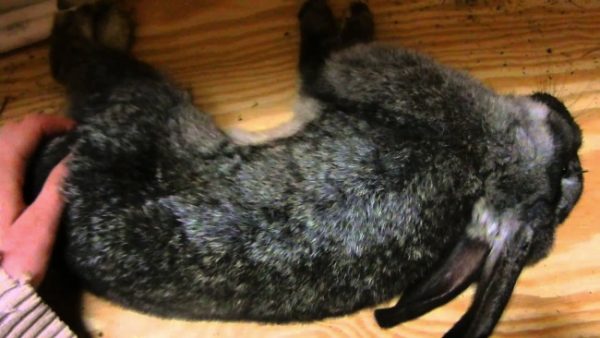
Symptoms of coccidosis in a rabbit
Coccidiosis is acute and chronic. Coccidiosis in acute form manifests itself on the third day after the defeat.
But coccidiosis in chronic form occurs when the individual is already ill and has recovered from the disease. Sometimes part of the pathogens remains in the body, but it does not harm the tissues of the liver and intestines.
Intestinal symptoms
Intestinal-type coccidiosis is considered a dangerous form that has a rapid development. It is accompanied by acute symptoms.
During an intestinal type of illness, the following symptoms appear:
- The emergence of alternating acute diarrhea with a rapid flow and constipation;
- In the fecal masses of animals there are mucous and blood discharge;
- Strong fever. To touch the body of the animal is hot enough;
- Sometimes you may notice bloating;
- Poor appetite or lack of it;
- Slow growth of the animal, its full stop;
- Purulent discharge from the eyes, nose;
- Wool becomes poor quality, it looks disheveled, without gloss;
- The belly becomes flabby and sagging.
Before dying, the rabbit has strong convulsions of the whole body.. An animal can fall on its back, while it throws back its head and makes quick movements with its paws. If during the time the appropriate measures are not taken and appropriate treatment is not provided, the individual may die in 2 weeks.
Hepatic symptomatology (if there are white spots on the liver)
Unlike intestinal coccidiosis, the symptomatology of the hepatic form is less bright and not so acute. It lasts much longer, from 30 days to 59 days.
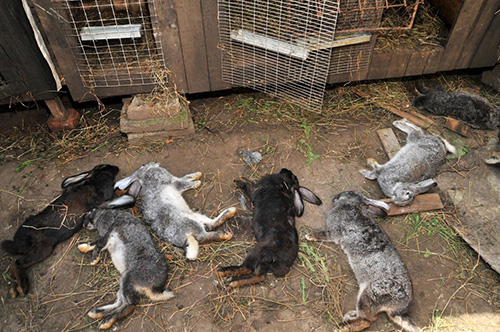
When the liver form of the animal has signs of intestinal coccidiosis, only yellow color of the eye mucosa is added, and white spots appear on the liver.
Favorable outcome in the presence of the hepatic form is much higher than with intestinal. But often this disease becomes chronic. As a result, the infected individual becomes dangerous to other rabbits, so it should be deposited in a separate place. An infected individual may die or, on the contrary, recover in a few months.
What can be treated sick animals?
How and what to treat coccidiosis in rabbits? Coccidiosis is well treated with drugs. Funds against this disease are sold in many veterinary pharmacies. They are used for treatment and prophylaxis.
During the use of drugs, infected individuals are deposited in a separate cell.The cage containing the diseased animals is disinfected and steamed with hot air. If treatment is started from the first days of the appearance of the disease, the chances of recovery will be much higher.. With timely treatment provided, the survival rate is 75-80%.
How to give medicine (how to dilute and in what dosage)?
Coccidiosis in rabbits is treated with the following medicines:
- Vetom;
- Baycox;
- Sulfadimethoxine;
- Sulfapyridazine;
- Phthalazole;
- Furazolidone;
- Solikox.
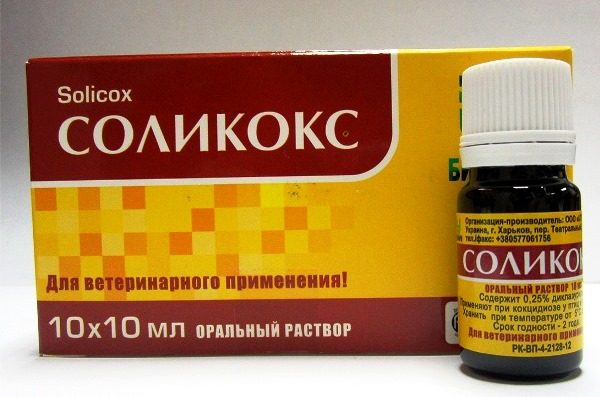
Rules for the use of drugs:
- Sulfadimetatoksin, Sulfapyridazin. The medicine is given with water. It adds to the water for drinking. On the first day, 0.2 grams of the drug is given per 1 kg of the individual’s weight, and 0.1 gram of the drug is given per 1 kg of the body weight of the animal over the next 4 days of treatment. After that, you need to take a break for 5 days and then repeat the treatment;
- Phthalazole. To enhance the effect, this drug is best used in conjunction with the tool Norsulfazol. Affected individuals each give 0.3 grams of Norsulfazole and 0.1 grams of Phthalazole per kilogram of rabbit weight.The course of treatment with these drugs should be approximately 5 days. After that, you need to take a break for 5 days and the treatment is repeated again;
- Furazolidone. During coccidiosis, daily give the affected rabbit 30 mg of the drug per 1 kg of body weight of the individual. The course of treatment is a week;
- Baikox. This remedy is considered the most effective in the treatment of coccidiosis. It always has a positive effect and in most cases helps to completely cure this terrible infection. Many experienced rabbit breeders say that even the advanced stages of coccidiosis can be cured with this drug. The instructions for this tool indicate several methods of application. You can inject 2 cubes of the drug of an infected individual and already, then pour the medicine into the drinker at the rate of 0.2 ml per 1 kilogram of the animal's weight. Sometimes the medicine is diluted with water and, according to the instructions, is administered to an infected animal at a dosage of 10 ml once a day. The exact application can be clarified in a veterinary pharmacy or study in detail the instructions for use;
- Levomycetin and Sulfadimezin. Sometimes with coccidiosis, an animal can be watered with a solution of chloramphenicol, this drug is given at a dosage of 40 grams or given the drug Sulfadimezin at a dosage of 150 mg.
Rules for the use of other drugs for coccidiosis in rabbits can be found in the instructions for them. Usually, the instructions describe in detail the characteristics and rules for taking the drug.
Treatment of folk remedies (iodine)
Many experienced rabbit bosses claim that the treatment of coccidosis in rabbits is also possible with folk remedies, for example, using iodine. It provides a cessation of the active development of coccidia and causes the oxidation of those substances that remain unprocessed by the stomach.
Rules for the treatment of coccidiosis iodine for rabbits:
- On the 25th day of gestation, females are watered with a 0.01% iodine solution in a dosage of 100 ml every day;
- On day 5 after the appearance of the young iodine must be removed from the diet, on day 5 it is returned again;
- Iodine watering individuals should be another 15 days. Every day you need to give a 0.02% iodine solution in a dosage of 200 ml. As a result, not only the rabbits are protected against infection, but also the rabbits themselves, because they receive iodine together with their mother's milk;
- Be sure to immediately after the precipitation of rabbits from the rabbit need to drink 0.01% solution of iodine. Every day, one individual should be given 50 ml of iodine solution;
- After 10 days, the iodine solution must be removed from the diet;
- About after 5 days you need to water the animals again with iodine solution. Watered with a 0.02% solution of iodine in a dosage of 100 ml. The course of treatment should be 15 days.
Disease prevention
Of course, the use of drugs and iodine - these are mandatory measures in the treatment of coccidiosis, but do not forget about prevention. Because sometimes adherence to preventive measures can prevent the occurrence of dire consequences for all rabbit offspring.
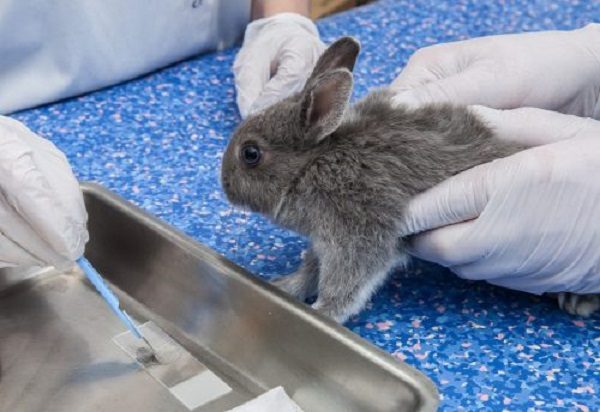
Remember the following rules for prophylaxis in coccidiosis in rabbits:
- It is necessary to regularly clean rabbit cages. They should always be in a clean state, there should be no litter and food residue;
- It is imperative that every day you should thoroughly wash the drinkers and change the water in them as often as possible;
- Troughs should always be clean, all food debris should be removed from them;
- To block access of penetration into animal cages of various rodents;
- It is imperative to keep adults separate from the young;
- The young growth should be kept in spacious cages in the amount of not more than 25 heads;
- Constantly, it is desirable to do the treatment of rabbit dwellings every day with boiling water and an ultraviolet lamp;
- You can not feed the young individuals bran, legumes, alfalfa and other feed mixtures with high protein content;
- Monthly in quarantine kept recently purchased individuals;
- When feeding, it is imperative to ensure that hay, grass or root crops do not fall onto the land contaminated with feces.
There is a good tool that is used during the prevention of coccidiosis in rabbits - Zoalen. This drug is given to animals for 10 days. At 1 kg of feed, 250 mg of the drug is added every day. It is recommended to feed the rabbits with special granulated feed mixtures, which contain substances necessary for the prevention of coccidiosis.
However, many breeders can not always determine the presence of the disease from the first days, so it goes into a difficult stage.
In most cases, during the advanced stage, the animal dies, even if treatment is provided. Many veterinary experts advise, even if the individuals survived after coccidiosis, it is still better to send them for slaughter. This is due to the fact that the disease may reappear in a few months. But is it possible to eat the meat of a rabbit with coccidia? Veterinarians in this case disagree. In any case, it is better not to risk it.
Dead carcasses after infection are recommended to be burned, because the infection can spread to healthy individuals.
And finally, a small video on the topic:
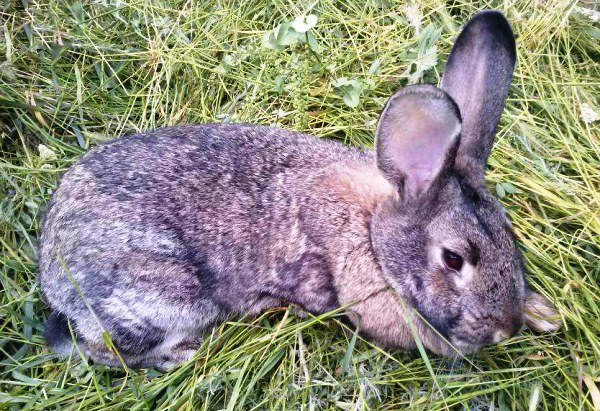
"On day 5 after the appearance of the young iodine must be removed from the diet, on day 5 it is returned again;"
Please explain what is this 5 days? Removed and immediately set? Or on the 15th day. Well, in general, it is not clear. And thanks for the article, very informative.
After 5 days, resume drinking again. I understood that.